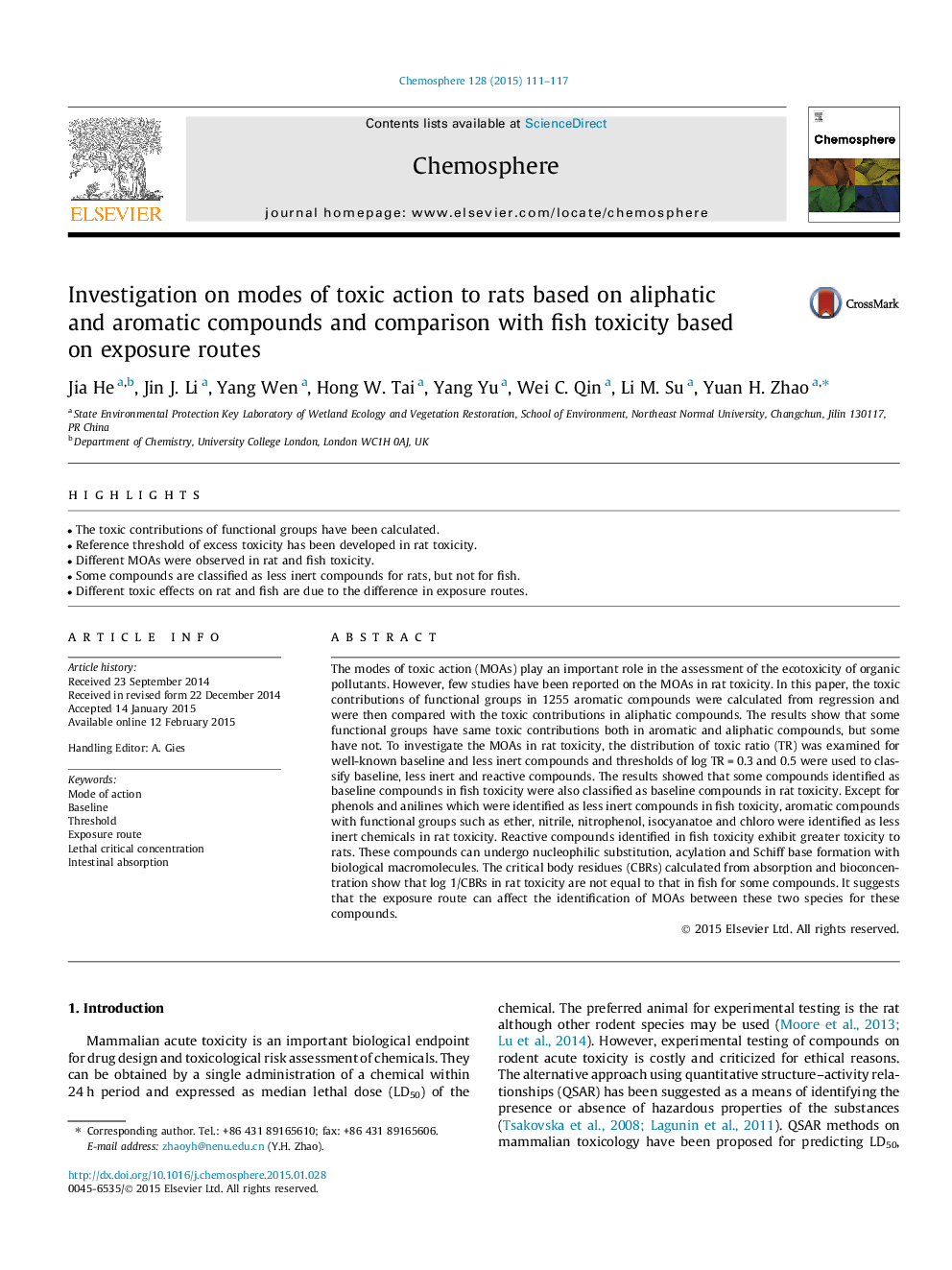| Article ID | Journal | Published Year | Pages | File Type |
|---|---|---|---|---|
| 4408478 | Chemosphere | 2015 | 7 Pages |
•The toxic contributions of functional groups have been calculated.•Reference threshold of excess toxicity has been developed in rat toxicity.•Different MOAs were observed in rat and fish toxicity.•Some compounds are classified as less inert compounds for rats, but not for fish.•Different toxic effects on rat and fish are due to the difference in exposure routes.
The modes of toxic action (MOAs) play an important role in the assessment of the ecotoxicity of organic pollutants. However, few studies have been reported on the MOAs in rat toxicity. In this paper, the toxic contributions of functional groups in 1255 aromatic compounds were calculated from regression and were then compared with the toxic contributions in aliphatic compounds. The results show that some functional groups have same toxic contributions both in aromatic and aliphatic compounds, but some have not. To investigate the MOAs in rat toxicity, the distribution of toxic ratio (TR) was examined for well-known baseline and less inert compounds and thresholds of log TR = 0.3 and 0.5 were used to classify baseline, less inert and reactive compounds. The results showed that some compounds identified as baseline compounds in fish toxicity were also classified as baseline compounds in rat toxicity. Except for phenols and anilines which were identified as less inert compounds in fish toxicity, aromatic compounds with functional groups such as ether, nitrile, nitrophenol, isocyanatoe and chloro were identified as less inert chemicals in rat toxicity. Reactive compounds identified in fish toxicity exhibit greater toxicity to rats. These compounds can undergo nucleophilic substitution, acylation and Schiff base formation with biological macromolecules. The critical body residues (CBRs) calculated from absorption and bioconcentration show that log 1/CBRs in rat toxicity are not equal to that in fish for some compounds. It suggests that the exposure route can affect the identification of MOAs between these two species for these compounds.
